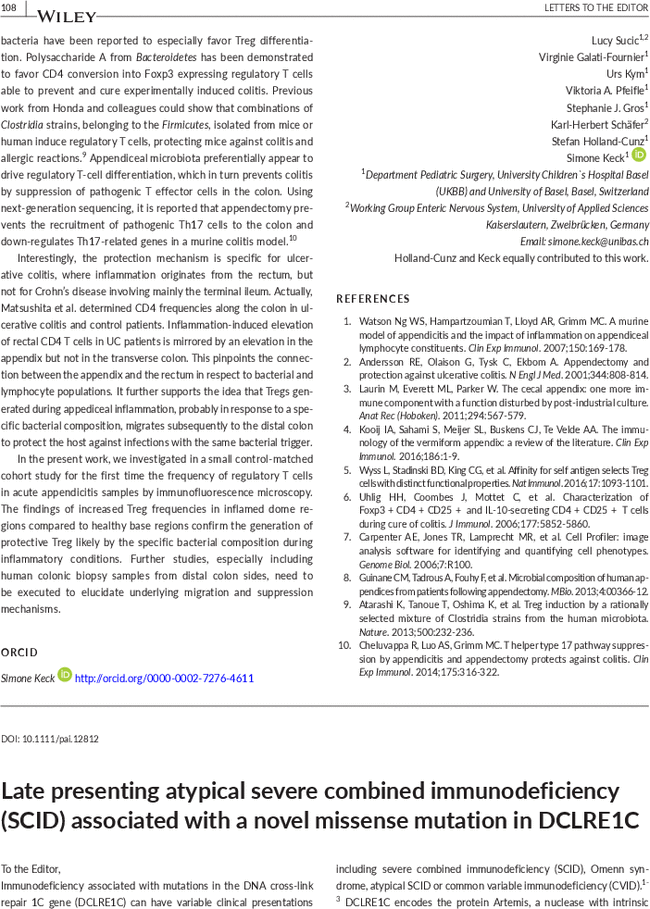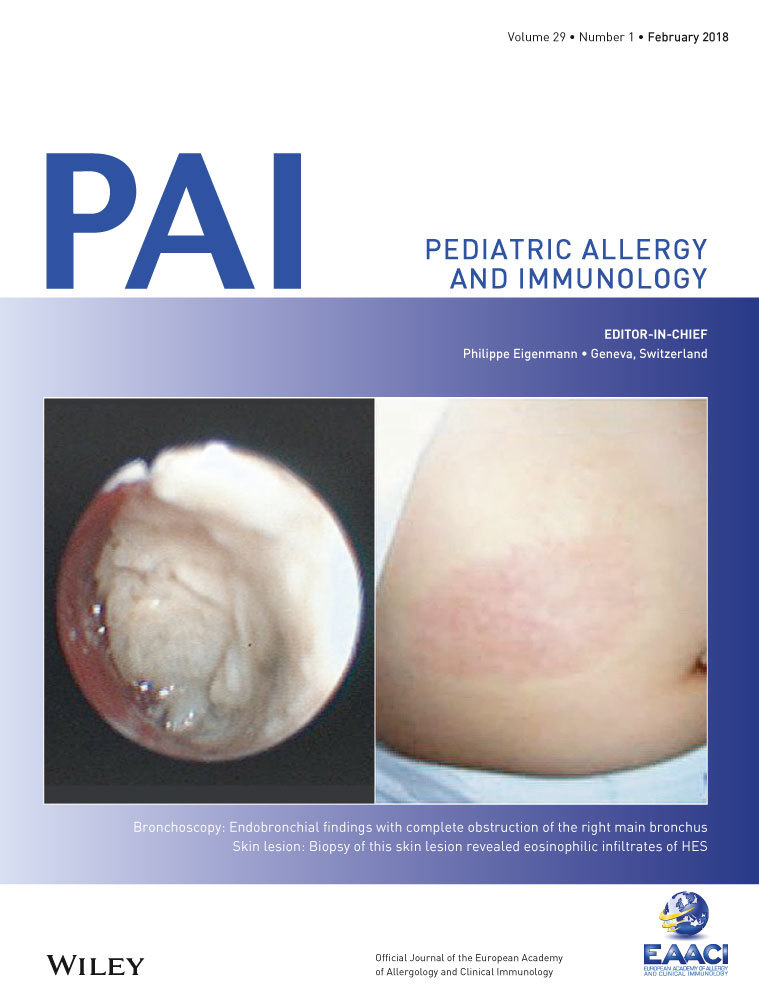Late presenting atypical severe combined immunodeficiency (SCID) associated with a novel missense mutation in DCLRE1C
Mikael Sundin
The Astrid Lindgren Children's Hospital, Karolinska University Hospital, Karolinska Institutet, Huddinge, Sweden
Search for more papers by this authorMichael Uhlin
Department of Clinical Immunology, Karolinska University Hospital, Karolinska Institutet, Huddinge, Sweden
Search for more papers by this authorAhmed Gaballa
Department of Clinical Immunology, Karolinska University Hospital, Karolinska Institutet, Huddinge, Sweden
Search for more papers by this authorKim Ramme
The Astrid Lindgren Children's Hospital, Karolinska University Hospital, Karolinska Institutet, Huddinge, Sweden
Search for more papers by this authorAntonios GA Kolios
Department of Immunology, University Hospital Zurich, Switzerland
Search for more papers by this authorPer Marits
Department of Clinical Immunology, Karolinska University Hospital, Karolinska Institutet, Huddinge, Sweden
Search for more papers by this authorCorresponding Author
Jakob Nilsson
Department of Clinical Immunology, Karolinska University Hospital, Karolinska Institutet, Huddinge, Sweden
Department of Immunology, University Hospital Zurich, Switzerland
Email: [email protected]Search for more papers by this authorMikael Sundin
The Astrid Lindgren Children's Hospital, Karolinska University Hospital, Karolinska Institutet, Huddinge, Sweden
Search for more papers by this authorMichael Uhlin
Department of Clinical Immunology, Karolinska University Hospital, Karolinska Institutet, Huddinge, Sweden
Search for more papers by this authorAhmed Gaballa
Department of Clinical Immunology, Karolinska University Hospital, Karolinska Institutet, Huddinge, Sweden
Search for more papers by this authorKim Ramme
The Astrid Lindgren Children's Hospital, Karolinska University Hospital, Karolinska Institutet, Huddinge, Sweden
Search for more papers by this authorAntonios GA Kolios
Department of Immunology, University Hospital Zurich, Switzerland
Search for more papers by this authorPer Marits
Department of Clinical Immunology, Karolinska University Hospital, Karolinska Institutet, Huddinge, Sweden
Search for more papers by this authorCorresponding Author
Jakob Nilsson
Department of Clinical Immunology, Karolinska University Hospital, Karolinska Institutet, Huddinge, Sweden
Department of Immunology, University Hospital Zurich, Switzerland
Email: [email protected]Search for more papers by this author
REFERENCES
- 1Moshous D, Pannetier C, Chasseval R, et al. Partial T and B lymphocyte immunodeficiency and predisposition to lymphoma in patients with hypomorphic mutations in Artemis. J Clin Invest. 2003; 111: 381-387.
- 2Lee PP, Woodbine L, Gilmour KC, et al. The many faces of Artemis-deficient combined immunodeficiency - two patients with DCLRE1C mutations and a systematic literature review of genotype-phenotype correlation. Clin Immunol. 2013; 149: 464-474.
- 3Volk T, Pannicke U, Reisli I, et al. DCLRE1C (ARTEMIS) mutations causing phenotypes ranging from atypical severe combined immunodeficiency to mere antibody deficiency. Hum Mol Genet. 2015; 24: 7361-7372.
- 4Marits P, Wikstrom AC, Popadic D, Winqvist O, Thunberg S. Evaluation of T and B lymphocyte function in clinical practice using a flow cytometry based proliferation assay. Clin Immunol. 2014; 153: 332-342.
- 5Schuetz C, Neven B, Dvorak CC, et al. SCID patients with ARTEMIS vs RAG deficiencies following HCT: increased risk of late toxicity in ARTEMIS-deficient SCID. Blood. 2014; 123: 281-289.
- 6van der Burg M, Ijspeert H, Verkaik NS, et al. A DNA-PKcs mutation in a radiosensitive T-B- SCID patient inhibits Artemis activation and nonhomologous end-joining. J Clin Invest. 2009; 119: 91-98.




